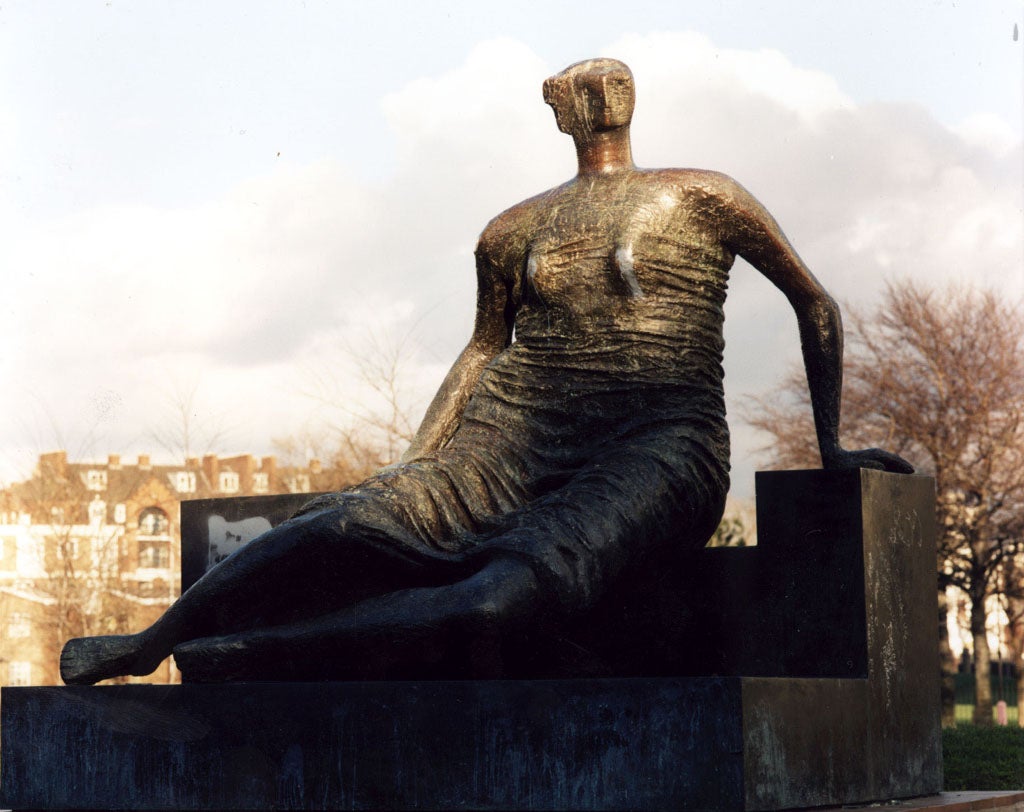Let councils sell our great works of art – just don't let them vanish
A week in arts: Are cuts justification enough to ignore an artist's wish? Plus: the cultural attractions of train stations and how the Indy's arts desk became a star


Your support helps us to tell the story
From reproductive rights to climate change to Big Tech, The Independent is on the ground when the story is developing. Whether it's investigating the financials of Elon Musk's pro-Trump PAC or producing our latest documentary, 'The A Word', which shines a light on the American women fighting for reproductive rights, we know how important it is to parse out the facts from the messaging.
At such a critical moment in US history, we need reporters on the ground. Your donation allows us to keep sending journalists to speak to both sides of the story.
The Independent is trusted by Americans across the entire political spectrum. And unlike many other quality news outlets, we choose not to lock Americans out of our reporting and analysis with paywalls. We believe quality journalism should be available to everyone, paid for by those who can afford it.
Your support makes all the difference.It's almost comforting, in a "some things never change" kind of way, to see that a Henry Moore sculpture has provoked an almighty row. It's almost comforting to see the old, very old, battle lines drawn once again – the great and the good of the art world arguing the brilliance of a Moore sculpture, and town councillors wanting to sell the damn thing and make millions.
What has happened is that Moore gave his notable work Draped Seated Woman to Tower Hamlets council in London's East End in the early Sixties for a knock-down price of £6,000. He wanted it displayed for the public in East London and wasn't too concerned about market value. It was a wonderful gesture from a socialist sculptor.
Predictably, the sculpture was subject to graffiti and the council decided to display it in the Yorkshire Sculpture Park, more than far enough away from graffiti artists, but also rather a long way from the Tower Hamlets public that Moore had intended it be seen by.
Now the council has realised that the sculpture, once nicknamed by locals "Old Flo", has a market value of up to £20m, which at a time of huge budget cuts is a tempting prospect. This provoked the head of the Tate Sir Nicholas Serota, and others including film director Danny Boyle, artist Jeremy Deller and Moore's daughter Mary, to pen an open letter arguing that the move "goes against the spirit of Henry Moore's original sale" and the artist's "demonstration of the postwar belief that everyone, whatever their background, should have access to work of art of the highest quality." It sounds mighty convincing, until one remembers that the sculpture intended for people of the East End has been in Yorkshire for 15 years. Nevertheless, one gets their point.
By the time you read this, the council may have reached a decision on the matter. But whatever the decision, it's not the end of the matter, because with arts cuts soon to bite again nationally, Tower Hamlets is unlikely to be the only council eyeing up its cultural treasures.
In the light of that, what is needed now is not just a blanket refusal to allow any selling off of publicly owned artworks, but a more flexible policy to ensure that they stay in this country and, even if bought by a private individual or company, have to be on public show for certain periods of the year.
This entails Government involvement, legislation, and a change of attitude by the great and the good in the art world to balance a recognition of the difficulties of the financial climate with a determination to see that the public is not deprived of cultural treasures.
I'm in no doubt that Henry Moore's Draped Seated Woman is the first of many objects to be at the centre of a struggle between cash-strapped councils (or even museums and galleries) and the champions of publicly owned art in the coming year.
There must be a new legal framework to ensure that the artworks stay in Britain and can be seen by all of us. And the champions must learn to be flexible.
Alight here for a cultural attraction
I have long been intrigued by how some stations on train and Tube lines puff their local cultural attractions on the platform, while most don't. Who makes these decisions and how are they made? Recently I was on a train that pulled into Winchester, home to a reasonably well-known cathedral and a reasonably well-known school. But the sign on the station proclaimed proudly: "Winchester, home of Winchester School of Art." Excellent. I don't know who runs the Winchester School of Art or who is on the board. But someone there has admirable pulling power.
The Indy arts desk is becoming a fiction staple
In the new play NSFW by Lucy Kirkwood at the Royal Court, Charlotte the bright Oxford first is working at a lads' mag when she is told she has an interview for a job on the Independent arts desk. This follows the film Tamara Drewe, in which Gemma Arterton was said to be working for The Independent arts desk. Why have screen and stage writers decided that a metaphor for moral high ground should be The Independent's arts desk? As the person who runs said desk, I clearly need to get out more and misbehave. Alternatively, Gemma and Lucy can come and do some work experience. It could be a horrible eye-opener for them.
Join our commenting forum
Join thought-provoking conversations, follow other Independent readers and see their replies
Comments